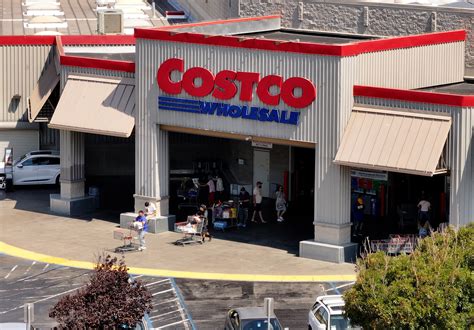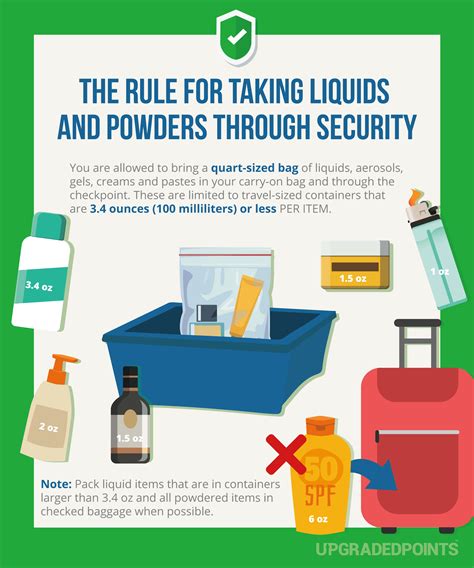
Tomato Recall: Salmonella Scare Prompts Recall in Eight States – Consumers Urged to Check Produce
A multi-state tomato recall has been initiated across eight states due to potential Salmonella contamination, prompting health officials to advise consumers to immediately inspect their produce and discard any potentially affected items. The recall, announced recently, impacts tomatoes distributed in Florida, North Carolina, South Carolina, Georgia, Alabama, Tennessee, Virginia, and Ohio. Health authorities are working to trace the source of the contamination and prevent further illnesses. Consumers who have recently purchased tomatoes from these states are advised to monitor themselves for symptoms of Salmonella infection, which can include diarrhea, fever, and abdominal cramps.
The Food and Drug Administration (FDA) and the Centers for Disease Control and Prevention (CDC) are collaborating with state and local partners to investigate the outbreak and determine the full scope of the recall. The specific type of Salmonella involved has not yet been publicly identified, but investigations are ongoing to pinpoint the exact strain and its origin.
According to the FDA, “Consumers, restaurants, and retailers should check their tomatoes and discard any that might be affected.” This proactive approach aims to minimize the risk of further infections and ensure public safety.
The symptoms of Salmonella infection typically appear within 12 to 72 hours after consuming contaminated food. While most people recover within a week without medical treatment, some individuals, particularly young children, the elderly, and those with weakened immune systems, may experience severe illness requiring hospitalization.
The recall highlights the importance of food safety practices and the vigilance required to prevent foodborne illnesses. Consumers are encouraged to stay informed about food recalls and follow safety guidelines to protect their health.
Details of the Recall
The tomato recall spans across eight states, creating a significant impact on consumers and retailers. The affected states include Florida, North Carolina, South Carolina, Georgia, Alabama, Tennessee, Virginia, and Ohio. The widespread distribution network means that the contamination could potentially affect numerous households and food service establishments.
Health officials have not yet specified the precise dates or brands of tomatoes involved in the recall, but they are urging consumers in the affected states to exercise caution with all tomato purchases made recently. The lack of specific details is part of the ongoing investigation to determine the exact source and scope of the contamination.
The FDA and CDC are working diligently to gather more information and provide updates to the public as soon as possible. They are collaborating with state health departments to trace the distribution pathways of the affected tomatoes and identify any common suppliers or processing facilities.
Retailers and restaurants in the affected states are being notified to remove potentially contaminated tomatoes from their shelves and menus. They are also being advised to clean and sanitize any surfaces that may have come into contact with the affected produce to prevent cross-contamination.
Symptoms of Salmonella Infection
Salmonella infection, or salmonellosis, is a common bacterial disease that affects the intestinal tract. The bacteria typically live in animal and human intestines and are shed through feces. Humans are most often infected through contaminated food or water.
Symptoms of Salmonella infection usually appear within 12 to 72 hours after consuming contaminated food. These symptoms can include:
- Diarrhea
- Fever
- Abdominal cramps
- Nausea
- Vomiting
- Headache
Most people recover from Salmonella infection within four to seven days without medical treatment. However, in some cases, diarrhea may be so severe that the person needs to be hospitalized. In rare cases, the infection can spread from the intestines to the bloodstream and other body sites, leading to more serious health problems.
Infants, young children, older adults, and people with weakened immune systems are more likely to develop severe illness from Salmonella infection. These individuals should seek medical attention if they suspect they have been infected.
Preventing Salmonella Infection
To prevent Salmonella infection, it is important to follow proper food safety practices. These practices include:
- Washing your hands thoroughly with soap and water before and after handling food.
- Cooking food to safe internal temperatures. Use a food thermometer to ensure that meat, poultry, and eggs are cooked thoroughly.
- Avoiding cross-contamination. Keep raw meat, poultry, and seafood separate from other foods in the refrigerator and during preparation. Use separate cutting boards and utensils for raw and cooked foods.
- Refrigerating perishable foods promptly. Do not leave perishable foods at room temperature for more than two hours.
- Washing fruits and vegetables thoroughly before eating.
- Avoiding unpasteurized milk and dairy products.
- Being aware of food recalls and advisories. Stay informed about food safety alerts and recalls to avoid consuming contaminated products.
Impact on Consumers and the Food Industry
The tomato recall has a significant impact on both consumers and the food industry. For consumers, the recall creates uncertainty and concern about the safety of their food. They may be hesitant to purchase tomatoes or other produce items, fearing potential contamination.
The recall also disrupts the supply chain for tomatoes. Farmers, distributors, retailers, and restaurants may experience financial losses as a result of the recall. They may have to dispose of large quantities of tomatoes and find alternative sources to meet consumer demand.
The food industry is also under increased scrutiny following the recall. Consumers and regulators are demanding greater transparency and accountability in food safety practices. Companies are being urged to implement more robust food safety programs and to improve their traceability systems to quickly identify and respond to potential contamination issues.
Investigation and Response
The FDA and CDC are working closely with state and local health departments to investigate the tomato recall and determine the source of the contamination. The investigation involves:
- Tracing the distribution pathways of the affected tomatoes.
- Collecting and testing samples of tomatoes and other food products.
- Interviewing people who have become ill to identify potential sources of contamination.
- Inspecting farms, processing facilities, and retail establishments.
The goal of the investigation is to identify the specific source of the contamination and to implement measures to prevent future outbreaks. The FDA and CDC are also working to provide timely and accurate information to the public about the recall and the steps they can take to protect themselves.
Long-Term Implications
The tomato recall highlights the ongoing challenges of ensuring food safety in a complex and globalized food system. The recall underscores the importance of:
- Strengthening food safety regulations and enforcement.
- Improving traceability systems to quickly identify and respond to potential contamination issues.
- Promoting collaboration and communication among government agencies, industry, and consumers.
- Investing in research and technology to improve food safety practices.
The tomato recall serves as a reminder that food safety is a shared responsibility. By working together, we can create a safer and more secure food supply for everyone.
Expert Opinions
Food safety experts emphasize the need for consumers to remain vigilant and informed during food recalls. According to Dr. Sarah Johnson, a food safety specialist at the University of Florida, “Consumers should always check their refrigerators and pantries for recalled items and follow the instructions provided by health officials. It’s also important to practice proper food handling techniques to minimize the risk of foodborne illness.”
Dr. Michael Thompson, a public health expert at the CDC, adds, “Food recalls are an important tool for protecting public health, but they rely on the cooperation of consumers, retailers, and the food industry. By working together, we can prevent further illnesses and ensure the safety of our food supply.”
Frequently Asked Questions (FAQ)
-
Which states are affected by the tomato recall?
The tomato recall affects eight states: Florida, North Carolina, South Carolina, Georgia, Alabama, Tennessee, Virginia, and Ohio.
-
What are the symptoms of Salmonella infection?
Symptoms of Salmonella infection typically include diarrhea, fever, abdominal cramps, nausea, vomiting, and headache. Symptoms usually appear within 12 to 72 hours after consuming contaminated food.
-
What should I do if I think I have purchased contaminated tomatoes?
If you think you have purchased contaminated tomatoes, you should discard them immediately. Wash your hands thoroughly with soap and water after handling the tomatoes, and clean and sanitize any surfaces that may have come into contact with the tomatoes.
-
How can I prevent Salmonella infection?
To prevent Salmonella infection, follow proper food safety practices: wash your hands thoroughly, cook food to safe internal temperatures, avoid cross-contamination, refrigerate perishable foods promptly, wash fruits and vegetables thoroughly, avoid unpasteurized milk and dairy products, and stay informed about food recalls and advisories.
-
Where can I find more information about the tomato recall?
You can find more information about the tomato recall on the FDA and CDC websites, as well as on the websites of your state and local health departments. Check the news for any further updates.
Detailed Analysis of the Impact and Response
The ramifications of a widespread tomato recall extend beyond immediate health concerns, affecting various layers of the food industry and consumer behavior. A closer examination of the recall’s impact and the multi-faceted response is essential to understanding its full scope.
-
Economic Impact on Farmers and Distributors: Tomato farmers and distributors face significant economic hardship. The immediate need to pull products from the market can result in tons of unsellable tomatoes, leading to direct financial losses. This situation is exacerbated if the source of contamination is linked to a specific farm or distributor, potentially damaging long-term contracts and reputation. Small-scale farmers may be particularly vulnerable, lacking the financial resources to absorb such losses. The recall could lead to temporary or permanent closures, affecting local economies that rely on agricultural income. Distributors also face the challenge of re-routing shipments, managing returns, and finding alternative suppliers, adding logistical and financial burdens.
-
Retail and Restaurant Challenges: Retailers and restaurants must act swiftly to remove potentially contaminated tomatoes from their shelves and menus. This involves carefully checking inventories, notifying customers, and complying with recall guidelines. The disruption can lead to empty shelves, reduced sales, and customer dissatisfaction. Restaurants, in particular, need to quickly find alternative ingredients to maintain their menu offerings, potentially increasing costs and altering taste profiles. Furthermore, any association with the recall can damage a restaurant’s reputation, leading to a decline in patronage. Transparency and proactive communication with customers are crucial for mitigating these effects.
-
Consumer Behavior and Trust: Food recalls, especially those involving common produce items like tomatoes, can significantly impact consumer behavior. The immediate reaction is often a decrease in tomato consumption, driven by fear and uncertainty. This sentiment can extend to other produce items, as consumers become more cautious about food safety in general. Restoring consumer trust requires clear and consistent communication from health agencies, food companies, and retailers. Providing detailed information about the recall, the steps being taken to address the issue, and guidance on safe food handling practices is essential. Long-term, repeated recalls can erode consumer confidence in the food supply chain, leading to shifts in purchasing habits and a greater demand for locally sourced or organic produce, which are often perceived as safer.
-
Regulatory Response and Investigation: The FDA and CDC play a crucial role in investigating the source of the Salmonella contamination and coordinating the recall. The investigation involves a complex process of tracing the tomatoes back through the supply chain, collecting samples for testing, and interviewing individuals who have become ill. The aim is to identify the point of contamination, whether it occurred at the farm, during processing, or in transit. The regulatory response also includes assessing the effectiveness of existing food safety regulations and identifying areas for improvement. This may involve strengthening inspection protocols, implementing new traceability technologies, and enhancing collaboration with state and local health departments. The investigation’s findings can lead to changes in industry practices and regulatory policies to prevent future outbreaks.
-
Technological Solutions for Traceability: The tomato recall highlights the need for better traceability systems in the food industry. Traditional methods of tracking produce, which often rely on paper records and manual processes, can be slow and inefficient. Emerging technologies, such as blockchain, offer the potential to create a more transparent and secure food supply chain. Blockchain can record every step of the tomato’s journey, from the farm to the consumer, in a tamper-proof ledger. This allows for rapid identification of the source of contamination and enables targeted recalls, minimizing the impact on the broader food supply. Other technologies, such as sensor-based monitoring systems and data analytics, can also help to improve food safety by detecting potential problems early on.
-
The Role of Food Safety Certifications: Food safety certifications, such as Good Agricultural Practices (GAP) and Good Manufacturing Practices (GMP), play a crucial role in ensuring the safety of produce. These certifications involve adherence to specific standards and practices designed to minimize the risk of contamination. Farmers and food processors who obtain these certifications demonstrate a commitment to food safety, which can enhance consumer confidence. However, certification alone is not a guarantee against contamination. Regular audits and inspections are necessary to ensure that standards are being maintained. Furthermore, the effectiveness of certification programs depends on the rigor of the standards and the enforcement mechanisms in place.
-
Preventive Measures and Best Practices: Preventing Salmonella contamination requires a multi-pronged approach that addresses all stages of the food supply chain. On the farm, this involves implementing practices such as proper sanitation of equipment, regular testing of water sources, and effective pest control. During processing and packaging, it is essential to maintain strict hygiene standards, monitor temperatures, and prevent cross-contamination. Transportation and storage must be carefully managed to ensure that tomatoes are kept at the correct temperature and protected from potential contaminants. Retailers and restaurants need to follow proper food handling practices, including washing hands thoroughly, using separate cutting boards for raw and cooked foods, and refrigerating tomatoes promptly.
-
Public Health Communication and Education: Effective public health communication is crucial for minimizing the impact of food recalls. Health agencies need to provide timely and accurate information to the public, using a variety of channels, such as websites, social media, and traditional media outlets. The communication should be clear, concise, and easy to understand, avoiding technical jargon. It is also important to educate consumers about safe food handling practices and the symptoms of foodborne illness. This can help to prevent infections and encourage individuals to seek medical attention if they suspect they have been exposed to contaminated food.
-
Global Implications: The tomato recall highlights the interconnectedness of the global food supply chain. Tomatoes are often sourced from multiple countries, and contamination in one location can have widespread consequences. This underscores the need for international collaboration on food safety standards and regulations. Harmonizing food safety practices across borders can help to prevent outbreaks and protect consumers worldwide. It is also important to strengthen international surveillance systems to detect and respond to foodborne illnesses quickly.
-
Environmental Factors: Environmental factors can play a role in Salmonella contamination. For example, contaminated irrigation water can spread the bacteria to crops. Flooding and extreme weather events can also increase the risk of contamination by spreading pathogens and disrupting food safety practices. Addressing these environmental factors requires sustainable agricultural practices, improved water management, and climate resilience strategies. Farmers need to implement measures to protect their crops from environmental hazards and ensure that water sources are safe.
Expanding the FAQ Section
To further enhance understanding of the tomato recall and its implications, here’s an expanded FAQ section with more detailed answers:
-
Are all types of tomatoes affected by the recall?
While initial reports indicated a general tomato recall, the specific types and brands affected are still under investigation. Health officials are working to pinpoint the exact varieties and sources involved. Until more information is available, consumers in the affected states should exercise caution with all recently purchased tomatoes. Pay close attention to any announcements from the FDA, CDC, and state health departments for specific product details.
-
How long will the recall last?
The duration of the recall depends on the speed and effectiveness of the investigation, the ability to trace the source of contamination, and the time it takes to remove all affected tomatoes from the market. It is impossible to provide an exact timeframe. However, consumers should continue to monitor updates from health officials and retailers and remain vigilant until the recall is officially lifted.
-
If I ate tomatoes recently and feel sick, what should I do?
If you have recently consumed tomatoes and are experiencing symptoms of Salmonella infection (diarrhea, fever, abdominal cramps, nausea, vomiting, headache), seek medical attention promptly. It’s important to inform your doctor about your recent tomato consumption and any other relevant details that may help with diagnosis and treatment. Early diagnosis and treatment can help prevent serious complications.
-
How are Salmonella outbreaks typically investigated?
Salmonella outbreaks are investigated through a collaborative effort involving local, state, and federal health agencies. The investigation typically involves:
- Epidemiological investigation: Interviewing individuals who have become ill to identify common food exposures and potential sources of contamination.
- Traceback investigation: Tracing the food product back through the supply chain to identify the point of contamination.
- Laboratory testing: Collecting and testing samples of food, water, and environmental sources to confirm the presence of Salmonella and identify the specific strain.
- Environmental assessment: Inspecting farms, processing facilities, and retail establishments to identify potential sources of contamination and assess food safety practices.
-
What are the long-term consequences of consuming food contaminated with Salmonella?
Most people recover from Salmonella infection without long-term health problems. However, in some cases, complications can occur. These may include:
- Reactive arthritis: Joint pain and inflammation that can develop weeks or months after the infection.
- Bacteremia: The infection spreads to the bloodstream, which can be life-threatening.
- Dehydration: Severe diarrhea can lead to dehydration, which can require hospitalization.
- Irritable bowel syndrome (IBS): Some studies have suggested a link between Salmonella infection and the development of IBS.
-
What are the specific food safety guidelines that farmers and processors must follow to prevent Salmonella contamination?
Farmers and processors must adhere to a range of food safety guidelines to prevent Salmonella contamination. These guidelines are often based on Good Agricultural Practices (GAP) and Good Manufacturing Practices (GMP). Some key practices include:
- Water quality: Regularly testing water sources for contamination and using appropriate water treatment methods.
- Manure management: Properly composting or treating manure to reduce the risk of pathogen contamination.
- Hygiene practices: Implementing strict hygiene protocols for workers, including handwashing and wearing clean clothing.
- Pest control: Implementing effective pest control measures to prevent rodents, insects, and other animals from contaminating crops.
- Equipment sanitation: Regularly cleaning and sanitizing equipment and surfaces to prevent cross-contamination.
- Temperature control: Maintaining proper temperatures during processing, storage, and transportation to inhibit the growth of Salmonella.
-
How can I be sure that the tomatoes I buy are safe to eat in the future?
While no system can guarantee 100% safety, there are steps you can take to minimize your risk:
- Buy from reputable sources: Purchase tomatoes from reputable retailers and farmers’ markets that adhere to food safety standards.
- Inspect tomatoes carefully: Look for signs of damage or spoilage, such as bruises, cuts, or mold.
- Wash tomatoes thoroughly: Wash tomatoes under running water before eating, even if they are labeled as pre-washed.
- Store tomatoes properly: Store tomatoes in the refrigerator to slow down the growth of bacteria.
- Stay informed: Stay up-to-date on food recalls and advisories from health agencies.
- Consider locally sourced produce: Locally sourced produce may have a shorter supply chain, reducing the risk of contamination.
-
What is the role of the government in ensuring food safety?
The government plays a critical role in ensuring food safety through a variety of functions:
- Developing and enforcing food safety regulations: The FDA and other government agencies set standards for food production, processing, and distribution.
- Conducting inspections: Government inspectors visit farms, processing facilities, and retail establishments to ensure compliance with food safety regulations.
- Investigating foodborne illness outbreaks: The CDC and other health agencies investigate outbreaks of foodborne illness to identify the source of contamination and prevent future outbreaks.
- Providing education and outreach: Government agencies provide information and resources to consumers and the food industry on food safety practices.
- Conducting research: Government agencies invest in research to improve food safety technologies and practices.
-
How can food companies improve their traceability systems?
Food companies can improve their traceability systems by:
- Implementing electronic record-keeping systems: Transitioning from paper-based records to electronic systems can improve the speed and accuracy of traceability.
- Using barcode and RFID technology: These technologies can be used to track products throughout the supply chain.
- Adopting blockchain technology: Blockchain can provide a secure and transparent platform for tracking food products.
- Collaborating with suppliers and distributors: Sharing data and information with suppliers and distributors can improve the overall visibility of the supply chain.
- Regularly testing and auditing traceability systems: Companies should regularly test and audit their traceability systems to ensure that they are functioning effectively.
-
What resources are available for consumers to learn more about food safety?
Consumers can access a wealth of information about food safety from various sources:
- FDA website (www.fda.gov): The FDA website provides information on food safety regulations, recalls, and consumer guidance.
- CDC website (www.cdc.gov): The CDC website provides information on foodborne illnesses and prevention strategies.
- USDA website (www.usda.gov): The USDA website provides information on food safety for meat, poultry, and eggs.
- State and local health departments: State and local health departments provide information on food safety in their respective jurisdictions.
- Food safety organizations: Organizations such as the Partnership for Food Safety Education and the Consumer Federation of America offer resources on food safety for consumers.
-
What role do consumer reporting and whistleblowing play in identifying food safety issues?
Consumer reporting and whistleblowing are crucial for identifying potential food safety issues that might otherwise go undetected.
-
Consumer Reporting: When consumers experience foodborne illness or identify potential contamination issues (e.g., finding foreign objects in food), reporting these incidents to health authorities or food companies allows for investigation and potential corrective action. Consumer reports can trigger inspections, product recalls, and improvements in food safety practices.
-
Whistleblowing: Whistleblowers, often employees within the food industry, can expose unsafe practices or violations of food safety regulations. These individuals may report their concerns to regulatory agencies or the media, providing critical information that leads to investigations and enforcement actions. Whistleblower protection laws are essential to encourage individuals to come forward with information without fear of retaliation.
-
-
How do climate change and environmental degradation impact food safety and contamination risks?
Climate change and environmental degradation can significantly impact food safety and increase contamination risks in several ways:
-
Increased Pathogen Growth: Warmer temperatures can accelerate the growth of pathogens like Salmonella in food and water, increasing the risk of contamination.
-
Extreme Weather Events: Floods, droughts, and severe storms can disrupt agricultural practices, damage food storage facilities, and spread contaminants. Flooding, for example, can contaminate crops with sewage and other pollutants.
-
Shifts in Pest Populations: Climate change can alter the distribution and behavior of pests, potentially leading to increased contamination of crops with insects and rodents carrying pathogens.
-
Water Scarcity: Droughts can lead to the use of lower-quality irrigation water, increasing the risk of contamination with pathogens and chemicals.
-
Environmental Pollution: Pollution from industrial activities and agricultural runoff can contaminate soil and water, leading to the accumulation of harmful substances in food crops.
-
Addressing these challenges requires sustainable agricultural practices, climate resilience strategies, and stricter environmental regulations.
-
What are the economic costs associated with foodborne illnesses like Salmonella infections?
Foodborne illnesses carry significant economic costs, including:
-
Medical Expenses: The costs of doctor visits, hospitalizations, medications, and other medical treatments for individuals who become ill.
-
Lost Productivity: The economic losses associated with individuals being unable to work due to illness.
-
Food Recalls: The costs of recalling contaminated food products, including removing products from the market, testing, and disposal.
-
Legal Expenses: The costs of lawsuits and legal settlements related to foodborne illness outbreaks.
-
Reputation Damage: The long-term costs associated with damage to the reputation of food companies and brands.
-
Public Health Response: The costs of investigating outbreaks, implementing control measures, and conducting public health education campaigns.
-
The economic burden of foodborne illnesses underscores the importance of investing in food safety measures to prevent outbreaks and protect public health.
-
What are the challenges in tracing the source of contamination in complex food supply chains?
Tracing the source of contamination in complex food supply chains can be extremely challenging due to several factors:
-
Multiple Suppliers: Food products often involve multiple suppliers and processing facilities, making it difficult to track the product’s journey.
-
Commingling of Ingredients: Ingredients from different sources may be mixed together during processing, making it difficult to isolate the source of contamination.
-
Lack of Standardized Traceability Systems: The absence of standardized traceability systems across the food industry can hinder the ability to track products effectively.
-
Data Gaps: Incomplete or inaccurate records can make it difficult to trace products back to their origin.
-
Time Delays: Delays in reporting and investigating outbreaks can make it more difficult to collect evidence and trace the source of contamination.
-
Overcoming these challenges requires improved traceability systems, better data management, and greater collaboration among stakeholders in the food supply chain.
-
How do cultural and regional food preferences influence food safety risks and practices?
Cultural and regional food preferences can influence food safety risks and practices in several ways:
-
Raw or Undercooked Foods: Some cultures have a tradition of consuming raw or undercooked foods, which can increase the risk of foodborne illness.
-
Fermented Foods: While fermentation can improve food safety, improper fermentation techniques can increase the risk of contamination.
-
Traditional Food Handling Practices: Traditional food handling practices that have been passed down through generations may not always align with modern food safety standards.
-
Regional Variations in Food Safety Regulations: Food safety regulations can vary across different regions and countries, leading to inconsistencies in food safety practices.
-
Access to Information and Resources: Access to information and resources on food safety can vary across different cultural and socioeconomic groups, leading to disparities in food safety knowledge and practices.
-
Addressing these cultural and regional factors requires culturally sensitive food safety education programs, collaboration with community leaders, and adaptation of food safety regulations to local contexts.









